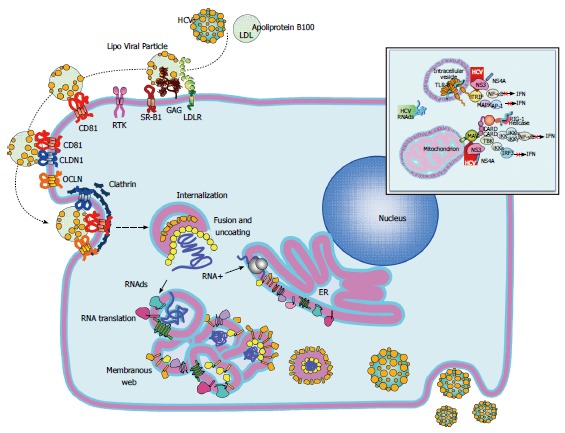Figure 2.

Hepatitis C virus replication cycle. The replicative cycle of hepatitis C virus (HCV) is displayed. HCV interaction with its cell receptors is shown. Upon entry, the HCV genome is released into the cytoplasm and subsequently translated and translocate into the RE. The membranous web is used as scaffold for viral replication. Interferon and TLR3 signaling pathways are disrupted by the HCV NS3/4A protease by cleaving MAVS and TRIF (upper right window). Assembled virions are released via the constitutive secretory pathway. HCV: Hepatitis C virus; MAVS: Mitochondrial antiviral signaling protein; TRIF: Toll-like receptor-domain-containing adapter-inducing interferon-β.
